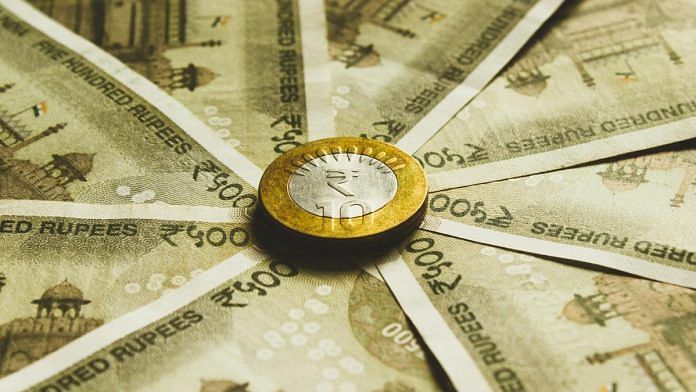New Delhi: The Supreme Court last week called for forming a panel to help control the “irrational freebies” offered to voters during elections, but the Narendra Modi government has already been mulling ways to keep checks on the funding of such handouts.
The Centre’s opinion, according to senior government officials, is that if a political party in a state offers freebies such as free power or rations, the state government should be transparent about the funding of such schemes and should not resort to off-budget loans, which are not included while calculating the fiscal deficit.
“You can’t say I will give you free electricity and not pay the subsidy. Then you pay the power discoms (distribution companies). That’s actually wrong. And that is a problem that we don’t account for properly,” a senior government official, who did not wish to be named, told ThePrint.
In simple terms, the official means that, for instance, if Punjab offers 300 units of free power to consumers, it should pay the outstanding dues to discoms in a transparent manner by accounting for it as part of the fiscal deficit.
“They don’t show these hidden liabilities and that is why we are cracking down on them. We are gradually tightening this.”
In the wake of elections in five states earlier this year, populist schemes and “freebie culture” have come under increased scrutiny because of their impact on the economy, especially in debt-ridden states like Punjab.
At an event in UP’s Jalaun last month, Prime Minister Modi warned people against falling for “revadi (freebie) culture” during polls, calling it “dangerous” for the development of the country.
Exactly how this “revadi culture” could be reined in is currently under active consideration.
Last month, N.K. Singh, chairperson of the 15th Finance Commission, said in the Financial Express that while states’ share of central taxes is their right, revenue deficit grants given monthly to them could be linked to the curbing of freebies and off-budget liabilities.
These grants are provided to the states under the recommendations of the finance commissions — which are constitutional bodies formed every five years to give recommendations on Centre-state financial relations — to bridge the gap in the revenue accounts of the states after the devolution of central taxes.
The term of the 15th Finance Commission, whose recommendations are valid for a period of 5 years until 2025-26, is over.
In the backdrop of the economic crisis in Sri Lanka, a Reserve Bank of India (RBI) paper in June this year sought to analyse the “fiscal vulnerability” of Indian states. It pointed out that freebies exceeded 2 per cent of the gross state domestic product (GSDP) for highly indebted states like Andhra Pradesh and Punjab.
The same month, in a presentation at a national conclave of chief secretaries, Finance Secretary T.V Somanathan said that many states are mortgaging public assets like municipal parks, hospitals, and other public offices to raise funds to finance their revenue spending (which refers to the committed expenditure of a state on items like salaries, pensions, welfare schemes and subsidies).
Five states — Andhra Pradesh, Uttar Pradesh, Punjab, Madhya Pradesh, and Himachal Pradesh — raised up to Rs 47,316 crore in the two years ending March 2022 through “escrowing of future revenue” — using state assets in the safe custody of a financial institution to secure loans against them — the presentation showed.
According to the central government, if such loans are secured, they should be clearly disclosed to it under the states’ net borrowing ceiling (NBC) as prescribed by the Centre at the beginning of the current financial year.
Also read: ‘Freebies leading India to economic disaster’ — Modi govt backs PIL seeking bar on poll sops
Keeping tight vigil on state finances
As a first step in this regard, the Union government at the beginning of financial year 2022-23 tightened the noose on state borrowings.
It decided that off-budget loans taken by state entities, where the principal amount and interest of the loans are serviced by the state itself, will be deemed to be part of the states’ debt and will be considered while deciding the annual net borrowing ceiling (NBC) for states in any given year.
According to a report released in May by analytics firm CRISIL Ratings, the off-balance-sheet borrowing of 11 states — which account for 75 per cent of the aggregate GSDP — reached a decadal high of 4.5 per cent of the GSDP or Rs 7.9 lakh crore in 2021-22.
These states are Maharashtra, Gujarat, Karnataka, Tamil Nadu, Uttar Pradesh, Telangana, Rajasthan, West Bengal, Madhya Pradesh, Andhra Pradesh, and Kerala.
Around 4-5 per cent of the revenue of states will go towards servicing such guaranteed obligations in 2022-23, partially reducing the ability of state governments to fund capital expenditure, the CRISIL report said.
“The power sector — primarily discoms — account for almost 40 per cent of the outstanding state guarantees. These were taken to repay the dues of power generation and transmission companies with discoms continuing to make cash losses. With most of them expected to continue reporting losses this fiscal as well, due to higher input (mainly coal) costs, states will have to provide higher support for timely servicing of the guaranteed facilities,” Anuj Sethi, senior director of CRISIL Ratings, was quoted as saying in the report.
The RBI report cited earlier also underscored that the power sector accounted for much of the financial burden of state governments, “both in terms of subsidies and contingent liabilities”.
(Edited by Asavari Singh)
Also read: You thought power subsidy is a Delhi-Punjab problem? Check out Tamil Nadu’s power sector mess



